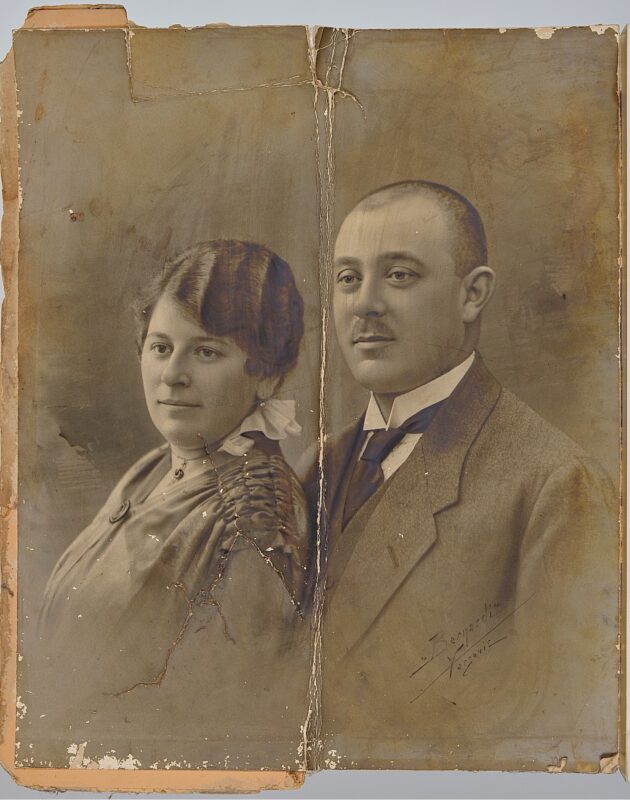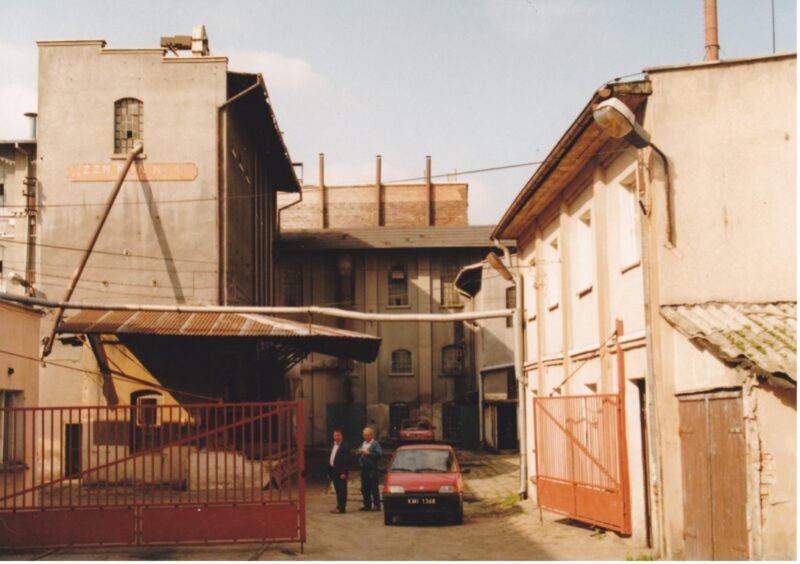IV. The Leszczynskis and the Ejzens (part 1)
2023/03/25
Text: Magdalena Krysińska-Kałużna, April 2022
Prewar Konin was inhabited by approximately 10,000 people, a third of which were Jewish*. Those among them who were particularly religious, but not especially rich, lived next to the synagogue. One such individual was Mojżesz Abram Ejzen. His house and furrier’s workshop were located nearby the Potters’ Square, Teper Mark, by Bożnicza Street 10 (now Plac Zamkowy by Mickiewicza Street 7), in front of the mikvah.
Despite growing up in poverty, all of the Ejzen children were well-educated. One of the sons, Majer Juda, became an attorney. He married Magdalena Leszczyńska with whom he lived on Wiosny Ludów Street, in front of the town hall.
‘My grandfather, Majer vel Markus Leszczyński, didn’t want her daughter to marry a poor Ejzen’ says Dorota Merlak, granddaughter of Magdalena Leszczyńska.
We’re meeting in her apartment in Warsaw. There are several photo albums on the table in front of me. Photographs of grandmothers, grandfathers, numerous aunts and uncles. They’re smiling as they celebrate birthdays and graduations. Almost no one survived the war.
Grandfather Majer Juda – the brave attorney who escaped from the ghetto through the canals after the uprising – died as well. Having joined his wife and daughter smuggled to the other side of the ghetto wall ahead of him, he was denounced by a Pole claiming to be a Home Army member.
After the Gestapo entered his apartment, Majer Juda jumped out of the window, pulling one of the officers with him. He died on the spot. His wife managed to hide going down the kitchen stairs. Thanks to the help of a Polish policeman, she escaped the raid and made her way to a nunnery in Pruszków, where her daughter Maria was hiding.
But let’s return to the times when no one could have expected such a tragic ending to the story of Majer Juda and Magdalena.
‘Grandma Madzia terribly fell in love with Ejzen, a pauper. My great-grandfather got her out of Konin for one year. They traveled during this time. When they returned, my grandma married my grandpa anyway. That was 1928,’ says Mrs. Dorota.
‘All things considered, your grandfather was a tolerant man,’ I conclude. ‘He, an industrialist, allowed his daughter to marry a poor man.’
‘During those times education was starting to matter. And the Ejzens were well-educated’ states the Ejzen-Leszczyński granddaughter with a smile.
She says that everything that she learned about the prewar Konin, she knows from her grandmother and her nanny, Marianna Gradek, who worked in one of the Leszczyński brothers’ houses before the war.
‘After the war my grandmother returned to the home on Armii Czerwonej Street (current 3 Maja Street 51), just by the roundabout, near the evangelical church. There was Henryk Leszczyński’s hardware store in the front and an outhouse in the back (the address of which was 3 Maja Street 64 before the war). On the other side of the street there was the enterprise of the second among Leszczyński brothers, a timber yard. And next door – another business, owned by three Leszczyński brothers (including my great-grandfather, Majer Markus) and their sister, a mill and an vegetable oil factory. This was just behind the corner as you turn from 3 Maja to Dąbrowskiego Street. Now there are empty squares in their place.’
Ajzyk vel Edward, great-great-grandfather of Mrs. Dorota, was the founder and the owner of the Leszczyńscy Mill and Oil Factory enterprise that he built on Dąbrowskiego Street ¾.
‘This was the first steam mill in Konin,’ recalls the descendant of the Leszczyński clan. ‘According to Wincenty Grętkiewicz**, Ajzyk was shot by a mill apprentice when he was riding in a cab, because of how competitive the Leszczyński Mill was against the other existing mills serving the local farms. Mr. Grętkiewicz states that this happened in 1905, but according to our research it was actually 1907. Following the sudden death of the Old Leszczyński – how they referred to him in Konin – the enterprise was passed on to his sons and daughter, Estera Leszczyńska, and her husband, Abraham Ickowicz. That’s when they started calling it “the Leszczyński Brothers’ Mill”.’
T.B.C.
* Konin was inhabited by 2,902 Jews in 1921 and around 2,500 in 1939.
** As written in Przegląd Koniński, 27 September 1988.
Translation: Ada Kałużna

Róża and Majer Leszczyński

Marianna Gradek (on the right)

Leszczyński Brothers’ Mill (in the 1960s)

Mickiewicza Street 7 (postwar)

Mickiewicza Street 7 before the demolition
Photographs courtesy of Mrs. Dorota Merlak

